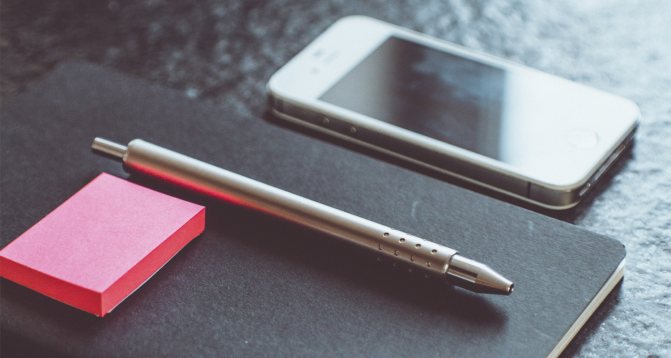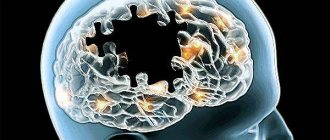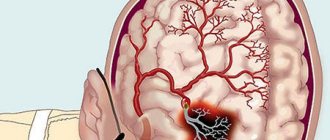Ways to influence the memorization of information
Peculiarities of memory development have been studied by scientists for a long time, and they paid attention to involuntary memory. Why do we remember certain fragments of life, forgetting others? It was found that a person remembers not what he often sees and encounters in life, but those events that impressed him more or forced him to make an effort to achieve results.
Knowing about these properties of memory, teachers in the classroom can not just ask to study a paragraph of a textbook, but give the following task: make a plan or retell what you read - which is much more difficult. There is another way to focus attention - understatement, the assumption of a continuation, when we watch a film or read an article, the phrase “to be continued” stimulates memorization until the next release, the continuation of the plot.
Of course, the emotional state and the mood on a certain issue are important; it is known that interesting information is remembered better. This also affects academic performance: something is grabbed on the fly, while other items pass by without being remembered. It is important to take into account interests and hobbies when choosing a future profession.
Voluntary memorization is a human prerogative; no other species of living beings on Earth is capable of remembering the necessary information through an effort of will. Until the age of three, a child uses involuntary memory, after which he can independently remember the necessary data.
It is customary to stimulate the development of memory in childhood through mechanical memorization - repeating information many times, rereading, memorizing. At the same time, it is easier for one person to perceive data aurally, for another - visually. It is worth paying attention to this and using it in learning and memorization. There are visual, auditory and kinetic types of memory (sensations, movements).
Simonides' technique
Scientists have noticed that text with meaning can be remembered 20 times more effectively than text without meaning. The memorization method was founded in Ancient Greece in the 5th century BC by the poet Simonides, whose principles are still relevant:
- If you need to remember a large amount of information, it should be split into parts;
- For the purpose of memorization, data must be repeated more times than is necessary for the initial repetition of knowledge;
- After half an hour, the information needs to be repeated, since after sixty minutes the residual memory is fifty percent, the next day - thirty percent, so the material is often repeated before classes. And someone can learn everything even during recess and tell it better.
- An important rule is that 30 repetitions over 30 days is better than 100 in one day. In order for information to be remembered for a long time, it is necessary to repeat it every day, reread it;
- Try to use a combination of different types of memory for memorization (vision, hearing, movement). Thus, children are recommended to study foreign languages in a playful way, using toys, playing out stories and actions.
Features of memory development require its training, the possibility of improvement by memorizing poems, repeating foreign words, and training attentiveness. Here are some simple ways to develop visual memory:
- Aivazovsky's method - look for a few seconds at an object, person, picture, try to remember the details. Reproduce what you saw with your eyes closed, completely with all the nuances. If it’s difficult, look at the object again and repeat the exercise.
- Matches - to start, use 4 matches, throw them on the table and remember the location, imagine them with your eyes closed. By practicing regularly, you can increase the number to fourteen matches.

To develop auditory memory, use the following method, which develops internal memory - mentally name a chain of simple mathematical examples, try to remember, count. This will require returning to the chain, the words.
At the end of the day, it is useful to remember events, new people, names, details of communication to train your memory. Try to recreate clear images in chronological order; the description should be in words and actions. Psychology, individual characteristics of memory and its development have always aroused interest, but certain efforts are required to achieve results that will pay off in the future with new achievements in various areas of life.
Let's move on to consider modern methods of memory development.
"Wonderful Garden"

In the country of “Great Mathematics” there is a wonderful garden. There grow trees consisting only of geometric shapes. You can go on a tour of this garden and admire these mysterious trees, but photographing them is prohibited. But you can remember them and then draw them.
For the exercise you will need cards with images of three trees consisting only of geometric shapes. My trees turned out like this.

Action plan:
- Show your child the card.
- After 30 seconds, remove it.
- Ask your child to draw the second tree he just saw.
If it is too easy, then ask to draw two trees, for example, the first and third.
Mnemonic memory techniques
Mnemonics is a special science of memory that arose about two thousand years ago. It is based on the system of the scientist Simonides; he proposed storing knowledge in memory in a special way, building special rooms and houses. This scheme was also used by other figures - Cicero, Quintilian.
Mnemonics is designed to help in the memorization process, to facilitate it, looking for ways to quickly and successfully memorize large amounts of knowledge, the main technique is the use of associative thinking. It is known that if the digits of a phone number or the name of a new acquaintance are mentally connected by associations - the image of another person, familiar dates, then memorization occurs much faster.
The method of figurative grouping is also known. This method involves dividing information into semantic parts and drawing mental pictures for each part of the text, which simplifies the reproduction of information. This technique helps students reproduce information. Often, being in an emotional state, you can forget the necessary information, the presence of pictures - images helps to restore information.
Entering into the text is another method that simplifies memorization and allows you to increase your memory capabilities. The essence of the method is to link information to sensations; in addition to figurative grouping, you need to add emotions, imagine yourself in the role of a traveler or scientist inventing something, everything depends on the situation, the more emotions there are, the more clues for creating “hooks” for memorization. Mentally we create a film with pictures and living sensations.
Keywords - it is important to write down key words after working on information; they will allow you to subsequently reproduce the picture of events along with other methods.

Ways to remember sequences of actions
- Method of pockets (mentally distribute actions, purchases into pockets, sorting into groups, the clearer the picture, the more likely it is to remember);
- Matrix memorization (represents the mental grouping of objects, actions into cells, and arranging them in space, no more than five on one surface, you can use a room, furniture);
- Memorization by chain (mentally arranging objects and people in the required sequence on a certain street, for example, endowing them with the necessary properties for better memorization);
- Reception of associations (suitable if it is necessary to fill out a large amount of information, numerical series, in this case it is necessary to learn a number of associations and mentally associate it with the necessary words);
- Tabular memorization (mentally drawing up a table with entering the necessary data, sequential actions).
To work with large texts, it is recommended to use plot-based memorization, which allows you to quickly assimilate information. It is necessary to feel all the incidents, plunge into the atmosphere described in the text, and become the hero of the novel. After drawing up the plot, it is worth retelling the information, “sounding out the film.”
Retelling has a strong effect on activating the brain and improving memory processes. This is a very strong aid in memory development.
Memorization algorithm:
- Internal orientation towards memorization (we give ourselves an internal task, volume, required level of knowledge);
- Entering the text (we tune in to emotional perception);
- Grouping information (distributing information, creating images);
- Memorizing, scanning, retelling.
When it comes to memorizing numbers, there are 2 main methods:
- Associative (the numbers are enlarged and similarities are looked for - familiar dates for memorization);
- Using encoding, matrix (shapes, colors, words - there are various encodings that help you remember numbers).
Recently, scientists have been looking for new approaches to the issue of memory development and methods of memorization. Let's take a closer look at these theories.
Develop synesthetic perception
What does a sunny day smell like? What is the sound of this high-rise building? What does red taste like? This is not just a game - in this way you develop a connection between visual images and the sensations of all other senses. Synesthesia helps the brain inventing complex associative connections: with their participation, it will be easier to find the necessary data in memory.
Thanks to synesthesia, visual images are firmly fixed in the mind - one sensory perception system triggers the mechanisms of another. By the way, this property of the human brain has long been noticed and actively used, which is why metro lines differ not only in destinations, but also in colors. Most people find it easier to remember a color, smell or taste than a name, which is why all brands have their own recognizable colors.
Through the development of synesthesia, you also include your creative talents - many brilliant creators from the world of art had this useful property.
Holographic memory according to Muller
Modern scientists also study the individual characteristics of memory and its development, so Muller proposed a technique called “holographic memory”. Its peculiarity is a significant increase in the use of memory potential. The author developed a technique assuming that memories can be stored in the form of holograms according to a certain order and used for targeted use.

Features of the development of imagination and memory, according to this technique, are stimulated based on basic principles:
- Memories of the external and internal level are perceived by each person in a special way;
- Memories respond well to targeted appeal, concentration on a specific task leads to an increase in the quality and quantity of acquired knowledge stored in memory;
- Memories need to be structured, arranged in an order convenient for further work;
- Memories of sensations are located differently, there are special lines for them, you need to learn how to connect these fragments of memories to improve memory;
- Memory is enhanced by using certain places in space, turning on the internal projector, where data is recorded in the form of slides that can be combined;
- Emotions enhance the perception of information presented on the hologram;
- Arranging memories in chronological order leads to the removal of internal barriers to memories that were previously blocked by the brain;
- To improve memorization, he recommends rationally increasing the time, logically or figuratively working with the material;
- Repeated repetition of information without using logic leads to blurring of the hologram and impairs memorization;
- Concrete actions appear well on the hologram, even better than mental conclusions;
- To store mental conclusions, it is worth using various types of sensations, relying on things that exist in reality;
- In the process of working with holographic memories, it is possible to both enhance and reduce the level of memories and memory capabilities;
- Breathing exercises that stimulate thought processes have a similar effect on memory;
- Working with holographic images on a daily basis significantly improves memory abilities;
- The Memory Hologram activates the unconscious memory, stimulating memories that were thought to be lost.
The author of the book announces a twofold increase in memory when performing basic exercises and several times when mastering the entire holographic memory technique. Its approach differs from previously known technologies associated with data encoding and matrix construction. The technique improves thinking, memorization, and work with information from previous years. The memory technology is described in more detail in the book “Introduction to Holographic Memory.”

Copy asymmetrical designs
Visual images that can be logically explained are best imprinted in memory. And vice versa - the less meaning there is in the image, the more difficult it is to reproduce. Because of this, many travelers easily find their way around modern cities with a clear structure and immediately get lost in ancient centers with a lack of logic in the layout of streets.
There is an excellent exercise that has a very strong effect on the development of visual memory. It is not easy, so it is better to master it in childhood. To do this, you will need a stone with a network of veins - marble or malachite. Of course, it is not so easy to get these minerals, so you can use photographs of them.
Arm yourself with pencils and draw a “portrait from life,” trying to reproduce all the veins, color transitions, thickness and location of the lines relative to each other. Then take a new piece of paper and try to repeat it from memory. Most likely, you won’t succeed right away; you will need to try again and again to make the copy even remotely match the original.
Age-related features of memory development
The peculiarity of memory development at an early age is manifested in increased learning ability, the need to remember large amounts of information for orientation in the world, self-care, and understanding of life processes. The child gains his first experience thanks to the properties of emotional, motor and figurative memory.
Memory is necessary for a child to understand the world and is key in acquiring experience and new skills. Memory at an early age is involuntary, memorization occurs without much effort on the part of the child, so it makes no sense to say “remember,” he will gradually understand and the information will be deposited in the subcortex of the brain.
Children often show miracles of memory in studying poetry, memorizing fairy tales; it is believed that a good memory is normal for a child, and besides, they live with emotions, which contributes to memorization. The child lives every fairy tale, story, feels how the heroes of the story go through adventures.
Peculiarities of memory development in childhood are manifested in the memorization of actions that are repeated - regular washing, washing hands, eating procedures, walking, everything is remembered by the child, and later the words that are most often heard are mentally linked to the actions. Typically, an adult remembers childhood from about three years of age; it is at this age that a child begins to distinguish himself as a separate subject of the world and remember life events.
Most of the information received in childhood goes into long-term memory, helping a person live. Psychologically, the first years are also very important, when the child feels love, care, support from loved ones, and help in demonstrating independence. In opposite cases, there may be difficulties with socialization and disruption of the life program (difficulties in building a family, having children).
Psychological features of the development of children's memory are manifested in the use of imaginative thinking and memory; after four years, the possibility of voluntary memory appears, which is best manifested in a playful form. They can already repeat and memorize poems. At school age, they learn new ways of memorizing - generalization, classification. Use planning and retelling to memorize.
"Photo report"

Photo reporters are people who go everywhere with a camera and take pictures of all sorts of interesting places. And then they use their photographs to tell people about it. Let's try to make our own photo report?
Prepare a picture in advance, for example this one.

Action plan:
- Show your child a picture and invite him to “take a photo” of it with his inner “camera.”
- After 30 seconds, remove the picture.
- Ask your child to answer the questions.
Questions for our sample could be the following:
- How many shelves are hanging on the wall?
- What is written on the bed linen?
- Who's lying on the bed?
- What color is the wardrobe and bedside tables?
- What's on the windowsill?
- What time is on the clock?
- Where does the turtle sit?
- How many lamps are there in the room?
- What color are the curtains?
- Is there a violin in the room?
There are a lot of similar exercises in children's magazines.
Turn images into words
Many people with poor visual memory can compensate for this deficiency by being able to remember words well in a certain order. Our brains are great at replacing images with symbols. Having broken the image into details, it is enough to simply give them a verbal description, preferably with a lot of detail.
For example, you saw a person only once, and now you have to meet him again among a large crowd of people. To avoid embarrassment, you need to imagine that you are describing him to compile an identikit: “Above average height, thin, wiry, dark hair, cut short, dark eyes, wide eyebrows. The nose is large, with a hump. He squints."
Converting a visual image into verbal symbols will help you flesh out details that you wouldn’t pay attention to during a quick acquaintance with a new friend. When going to a meeting, you will simply recite his verbal portrait to yourself, and the brain itself will reproduce the visual picture.










